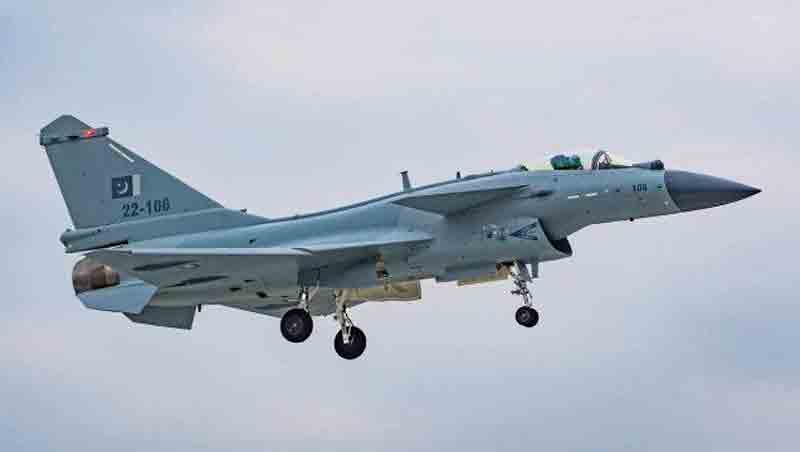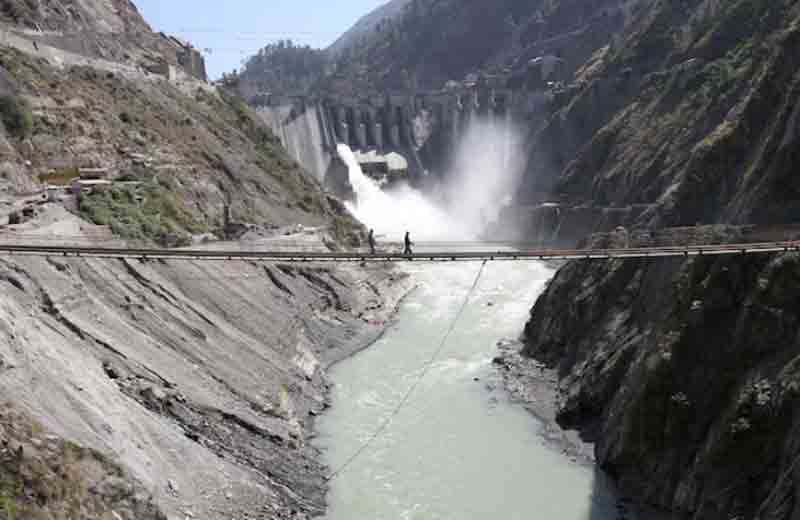Since the 2019 conflict, India and Pakistan have notably enhanced their military capabilities, increasing the potential for escalation even in minor confrontations, according to former military officials and analysts.
Pakistan has accused India of planning a military operation following New Delhi’s allegations that Islamabad was responsible for a deadly attack on tourists in Indian-administered Kashmir last month. Prime Minister Narendra Modi has pledged to retaliate against those behind the attack ‘in ways they cannot imagine.’
Although Pakistan denies any involvement, it has cautioned that it will respond if provoked. In 2019, India executed airstrikes within Pakistan in response to a bombing of an Indian military convoy in Kashmir, claiming to have destroyed ‘terrorist camps.’ Pakistan retaliated with its own airstrike, resulting in the downing of an Indian aircraft during a two-day military engagement.
The two nations have fought three wars—1948, 1965, and 1971—and have had numerous skirmishes since their independence, primarily over the disputed Kashmir region. Both countries developed nuclear arsenals in the 1990s, and Kashmir remains one of the world’s most perilous flashpoints.
Military analysts suggest that neither country is likely to resort to nuclear weapons unless absolutely cornered, but even a limited conflict could escalate rapidly. They predict that such a confrontation would likely involve aircraft, missiles, or drones, where both nations are seen as evenly matched, although India’s superior resources would become significant over time.
‘Decision-makers in both countries now exhibit a greater willingness to initiate and escalate conflicts compared to the period before 2019,’ stated Frank O’Donnell, a non-resident fellow at the Stimson Center’s South Asia Program in Washington, noting that they previously managed to engage without resorting to nuclear arms. ‘However, without a clear understanding of the specific actions that could lead to escalation, the risk of unintended conflict remains high,’ he added.
Since 2019, both nations have enhanced their military capabilities, leading to new conventional strike possibilities. Muhammad Faisal, a security researcher from the University of Technology, Sydney, noted, “Each side will believe they are in a stronger position than before; however, true assessments will only emerge during actual combat.”
India, feeling disadvantaged in 2019 due to reliance on aging Russian aircraft, has since acquired 36 Rafale fighter jets from France, with additional orders for its navy. In response, Pakistan has received batches of the advanced J-10 warplanes from China since 2022, which are comparable to the Rafale, totaling at least 20 according to the International Institute for Strategic Studies. Both aircraft are equipped with sophisticated technology, with the Rafale featuring Meteor missiles that can engage targets beyond visual range, while the J-10 is armed with the PL-15 missile, as per an unnamed Pakistani security official.
To address vulnerabilities in air defenses revealed during the 2019 conflict, India has procured Russia’s S-400 mobile anti-aircraft missile system, while Pakistan has acquired the HQ-9 from China, which is a derivative of Russia’s S-300 system.
Anil Golani, a former air vice marshal in the Indian Air Force and director general of the Centre for Air Power Studies, remarked, “In many ways, we are certainly better off than in 2019.” He also expressed that despite the domestic pressure for military action, both India and Pakistan are unlikely to seek a full-scale war.
Additionally, the looming presence of China, a key ally for Pakistan and a rival to India, complicates the situation, with the U.S. monitoring developments for insights into China’s military capabilities. The Chinese aircraft and its PL-15 missile have not been previously engaged in combat.
Faisal remarked, “This could represent a competition between Western and Chinese technology,” while noting that India faces the challenge of determining how many air squadrons to allocate to the Pakistan front, as it must also remain vigilant against China.
Historically, China and India engaged in a brief border conflict in 1962, with the two nations’ forces clashing again in 2022 along their contentious Himalayan border.
Pakistan operates a fleet of F-16s, U.S. aircraft acquired decades ago during a period of stronger relations with Washington. These F-16s were utilized during the 2019 conflict, prompting India to file complaints with the U.S., although New Delhi’s relationship with Washington has since strengthened significantly. To mitigate potential political repercussions associated with the F-16 and to leverage more advanced technology, experts suggest that Pakistan will likely lead with the Chinese J-10.
However, a drone or ground-launched missile strike is deemed more probable, as these options do not risk pilot casualties. India has sought assistance from Israel for combat-ready drones, acquiring the Heron Mark 2, and has placed an order for U.S. Predator drones.
Meanwhile, Pakistan has procured Turkey’s Bayraktar TB2, which was utilized by Ukraine in its conflict with Russia, as well as the Akinci drone, according to a Pakistani security official. In the midst of this standoff, Pakistan conducted a test of a surface-to-surface ballistic missile with a range of 450 km (280 miles) on Saturday, asserting that its armed forces are prepared to “protect national security against any aggression,” as stated by the military. Additionally, Pakistan possesses a variety of short-range and medium-range missiles that can be launched from land, sea, and air.
India has not yet issued a statement regarding the recent test. The country possesses advanced military capabilities, including the BrahMos supersonic cruise missile with a range of approximately 300 km, as well as the Agni series of intercontinental ballistic missiles.
The conflict in 2019 nearly escalated, with threats of missile strikes until U.S. intervention helped de-escalate tensions. Kaiser Tufail, a former Pakistani air force pilot, noted that India failed to establish effective deterrence in 2019, suggesting that it may pursue a more decisive strike this time, which could increase risks.
Modi remarked after the 2019 clashes that the absence of Rafale fighters, which were on order, was felt, implying that the outcome might have been different had they been available. Tufail cautioned, “Exceeding the actions of 2019 carries significant risks. Engaging in conflict between nuclear-armed nations is profoundly perilous.”
Discover more from Defence Talks | Defense News Hub, Military Updates, Security Insights
Subscribe to get the latest posts sent to your email.





